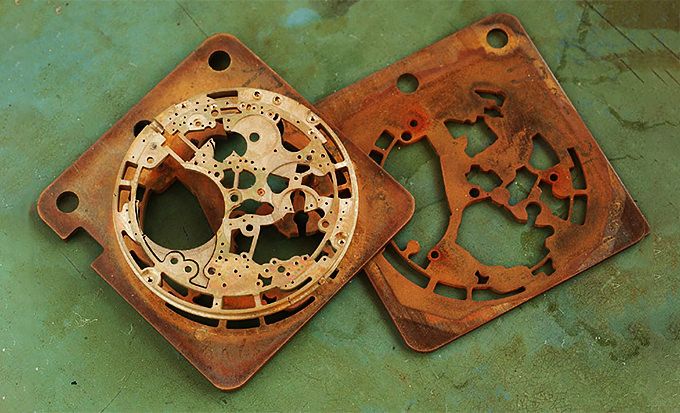Watch GlossarySkeleton Dial
See what makes your watch Tick
May We Recommend
A Skeleton dial watch is where all the moving parts are visible through the front on the dial. Found mostly in mechanical watches and a few quartz watches, a skeleton dial has a transparent movement where one can see the inner workings of the watch.

Skeleton dial watches have been around for centuries. The history behind its origin is very intriguing. On the early morning of December 2nd, 1805, a soldier of the Napoleon’s Grand Army discovered an art form so path breaking that it changed watchmaking forever. It was the Battle of Austerlitz, and right in the middle of the combat his rifle got damaged. Due to lack of resources on the battlefield the only option left for him was to use the small metal parts from his pocket watch. An engraver by profession, the soldier resorted to removing the non-vital metal contents and engraving the remaining parts with curves reminding him of the red curls of his fiancée Mathilde, waiting for him back in his native Provence. And thus came to existence the first skeleton watch which is exhibited in the museum of the Napoleonian Army in the Invalides in Paris.

A more technical version of the story also exists. André-Charles Caron considered the father of Skeleton watchmaking in 1760 conceived of an astute way of getting the public’s interest in the watches by exposing what he called “their innermost secrets”. He methodically openworking plates, bars and bridges to reveal what lay underneath, and for the first time, the wheels and gears of time were there for all to see. An instant hit amongst the public, the trend of these exposed watches is still continuing till date and watch connoisseurs around the world are appreciating the unique and intricate art form.

To achieve a skeleton effect, watchmakers remove approximately sixty to seventy percent of the metal that is usually found in a watch and intricately engrave it to improve the aesthetic appeal of the time teller. Though a skeleton dial watches were a necessity earlier but even with modern inventions, these watches have become a watch connoisseur’s delight.
The process begins with the drilling of holes in the bridges, bars and mainplate on a jig boring machine, preluding more elaborate machining sequences. Following a precise cutting plan, the various workpieces are subjected to a slow electro-discharge process according to a predefined pattern in order to remove part of the metal. In fact, these components lose up to half of their initial volume in the course of the skeletonizing process. The movement is then decorated with a special engraving.







